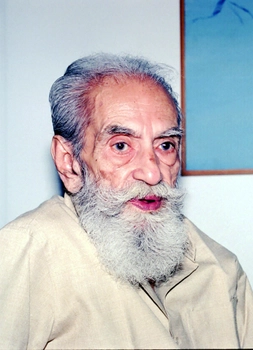B. C. Sanyal: 7 Inspiring Facts About His Legacy and Influence on Indian Art
Bikash Chandra Sanyal, commonly known as B. C. Sanyal, was a pioneering figure in the history of Indian art. He was a key member of the Bengal School of Art and played a vital role in shaping modern Indian art in the 20th century. His artistic journey was characterized by a deep commitment to blending traditional Indian art with modern techniques and sensibilities. Through his works, Sanyal not only showcased his exceptional skill but also conveyed a message of cultural nationalism and artistic independence, which greatly influenced the direction of Indian art during his time.
Early Life and Education
Born on 15th November 1899 in the village of Bikrampur in present-day Bangladesh, B. C. Sanyal came from a modest family background. From a young age, he showed a natural inclination towards art. He was encouraged by his family to pursue his passion for painting, and thus began his journey into the world of visual arts.
Sanyal enrolled at the prestigious Government College of Art in Kolkata, where he studied under some of the finest artists of his time. His education at the college exposed him to both traditional Indian and Western styles of art, which would go on to influence his unique approach to painting. Sanyal was deeply drawn to the works of the Bengal School of Art, which focused on reviving traditional Indian art forms in response to Western colonial influence. He was mentored by renowned artists like Abanindranath Tagore and Nandalal Bose, who greatly impacted his artistic philosophy.
Artistic Style and Influences
B. C. Sanyal’s art was a beautiful fusion of traditional Indian aesthetics and modern artistic movements. He was an avid proponent of Indian nationalism through art and sought to depict the rich cultural heritage of India in his work. Sanyal’s style was characterized by strong lines, earthy tones, and a focus on Indian themes, particularly mythological subjects, landscapes, and portraits.
Sanyal’s work often explored themes of rural India, drawing inspiration from the simple lives of peasants and the beauty of everyday scenes. His ability to portray the essence of rural life with sensitivity and depth was one of his greatest achievements as an artist. His early works were heavily influenced by the Bengal School’s emphasis on Indian folk art and traditional miniature paintings.
While rooted in Indian traditions, Sanyal’s works also bore the marks of European influences. His exposure to Western styles such as Impressionism and Post-Impressionism allowed him to experiment with color, texture, and light in innovative ways. Despite these influences, Sanyal’s commitment to Indian nationalism remained central to his art. He sought to develop a distinctively Indian style that blended both Western and Indian techniques while preserving the cultural and spiritual essence of his homeland.
Notable Works and Themes
B. C. Sanyal created several iconic works during his lifetime that reflected his unique artistic vision. His ability to capture the simplicity and beauty of rural India is evident in many of his works. Some of his most notable paintings include:
- “Village Scene” – One of Sanyal’s most celebrated works, this painting depicts the serene and humble life of rural India. Through strong, bold lines and earthy tones, he successfully conveyed the warmth and simplicity of village life, which was a recurring theme in his art.
- “The Wrestlers” – This iconic painting shows a group of traditional wrestlers engaged in a contest, demonstrating Sanyal’s skill in capturing the strength and dynamic energy of his subjects. The use of deep, contrasting colors added an emotional intensity to the scene, making it one of his standout pieces.
- “Mother and Child” – A sensitive portrayal of the maternal bond, this work reflects Sanyal’s deep empathy for human emotions and relationships. Through this painting, he captured the timeless theme of love and nurturing in a manner that resonated deeply with viewers.
- “Rural Landscape” – Another example of Sanyal’s fascination with rural India, this piece portrays the lush landscapes and tranquil rural life of India. His keen attention to detail and use of nature as a subject made his work timeless and universal.
These works, alongside many others, not only showcased Sanyal’s technical skill but also conveyed his deeper philosophical and cultural concerns, from the celebration of Indian rural life to the exploration of complex human emotions.
Daily Life and Artistic Philosophy
B. C. Sanyal was known for his disciplined and dedicated lifestyle, which revolved around his art. He spent long hours working in his studio, constantly refining his technique and exploring new methods of expression. His commitment to his craft was unwavering, and he believed that art should be an expression of the artist’s inner thoughts and emotions.
Sanyal’s philosophy was deeply rooted in the idea that art should be a reflection of one’s culture and identity. He often emphasized the importance of looking inward to discover one’s artistic voice and of creating works that resonated with the collective consciousness of the nation. He believed that art had the power to bring about social change and elevate national consciousness, which was a sentiment that aligned with the larger cultural nationalism movement during the time.
He was also a teacher, and his role as an educator at the Government College of Art in Kolkata helped shape the next generation of artists in India. Sanyal’s dedication to his students and his role in nurturing young talent ensured that his legacy would endure beyond his own lifetime.
Significance and Impact on Indian Art
B. C. Sanyal’s significance in Indian art is undeniable. As a member of the Bengal School of Art, he played a crucial role in the development of a distinctive Indian artistic style that was rooted in the country’s traditions yet open to modern influences. His works were among the earliest to challenge the dominance of Western art traditions in India and paved the way for future generations of Indian artists to explore their cultural heritage through their work.
His contribution to Indian art went beyond his paintings. Sanyal’s influence as a teacher, mentor, and cultural advocate helped to shape the course of Indian modernism in the 20th century. His students and followers carried forward his vision of art as a vehicle for cultural identity and national pride.
FAQs About B. C. Sanyal
1. What is B. C. Sanyal known for?
B. C. Sanyal is known for his role in the Bengal School of Art and his ability to blend traditional Indian themes with modern artistic techniques. He is celebrated for his depictions of rural life, mythological themes, and human emotions.
2. How did B. C. Sanyal influence Indian art?
Sanyal was instrumental in the development of a distinct Indian style of modern art, which emphasized national identity and cultural heritage. His works helped shape the Indian modernist movement and inspired future generations of artists.
3. What were some common themes in Sanyal’s art?
Sanyal’s art often focused on rural life, mythology, and human relationships. He was deeply influenced by Indian culture and spirituality, which he expressed through symbolic and emotional imagery.
4. Where can you find B. C. Sanyal’s works today?
Sanyal’s works are displayed in various national and international galleries and collections. His paintings are considered part of the heritage of Indian modernism, and many are housed in prominent art museums in India.
5. What was B. C. Sanyal’s teaching philosophy?
Sanyal believed in nurturing his students’ individual artistic voices and encouraged them to explore their cultural roots while embracing modern artistic techniques. His dedication to teaching ensured that his legacy as an educator was just as impactful as his artistic achievements.
Conclusion
B. C. Sanyal’s contributions to Indian art were revolutionary. He successfully merged the past with the present, blending traditional Indian themes with modern artistic forms to create a body of work that continues to inspire. His paintings, filled with cultural significance and emotional depth, have secured his place as one of India’s most important artists. Through his art, his philosophy, and his role as a teacher, B. C. Sanyal shaped the trajectory of modern Indian art, and his legacy continues to be felt today.










